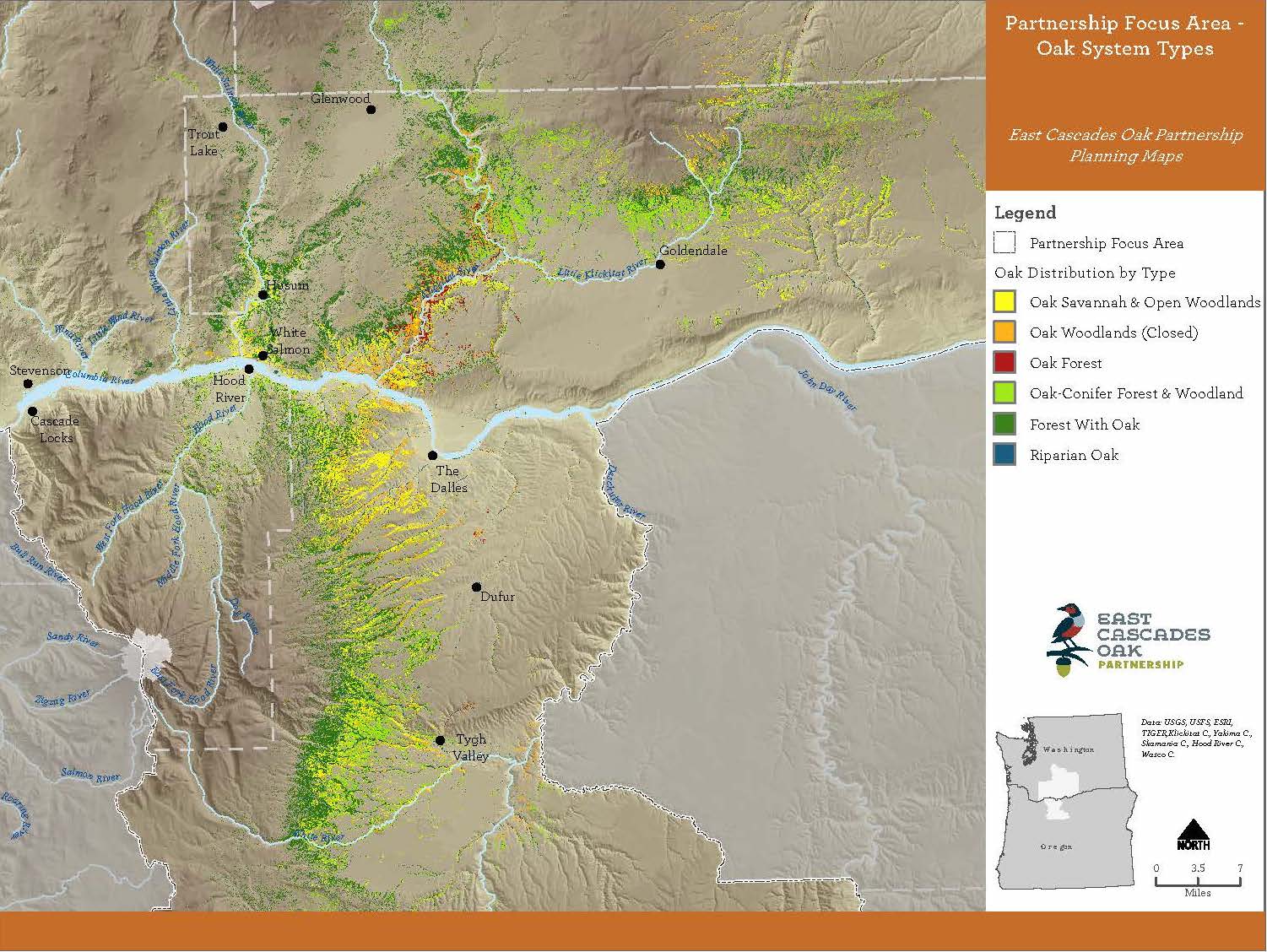When we selected our Oak and Prairie conservation priority in 2015, one of our goals was to support local partnerships so they can contribute to the sustainability and resilience of oak and prairie habitats across the entire Pacific Northwest. Pacific Birds has supported the East Cascades Oak Partnership (ECOP) since their inception, and we are happy to showcase their newly published Strategic Action Plan! They were awarded a Pacific Birds 2020 Partnership Grant to continue to build capacity and implement actions in the plan.
Oaks for the Long Term
The East Cascades Oak Partnership's 2020-2030 Strategic Plan is a good read if you care about Oregon white oaks and the communities that exist within oak ecosystems. The importance of oak and prairie habitats to select landbirds is well documented, and people love oaks! View the full plan, or start with the executive summary.
The plan highlights community and ecological outcomes, recognizing their interdependence. The ecological outcomes center around diversity, resilience, and reciprocal human interactions; the community outcomes relate to agriculture and forestry, First Foods, fire, jobs, homes, tourism and inclusion/diversity. ECOP estimates partners from more than 25 organizations invested at least 3500 hours in the development of the Strategic Plan.
A notable feature of the ECOP service area is the diversity of bird species, resulting from the sweeping diversity of its habitats. ECOP identified six different oak system types within its boundary. If you are in oak savanna or open open woodlands, you might find a Lewis's Woodpecker nesting in a tree cavity, storing acorns to supplement its diet, or gleaning insects from oaks and associated vegetation. Move further into the oaks or coniferous trees and you could see the Nashville Warbler or Pygmy Nuthatch. Other priority landbirds in the area include the Common Nighthawk, Ash-throated Flycatcher, White-headed Woodpecker, and Chipping Sparrow.
Elevating the Oak Landscape
While the oak landscapes in the Northwest have been greatly diminished, what we do now can ensure their future presence. And that takes people understanding what oaks do for them and what we can do for oaks.
As Lindsay Cornelius, the Natural Area Manager at Columbia Land Trust explains: "The East Cascades Oak Partnership is helping to elevate the oak landscape in our collective conscience. It is such a profoundly important resource– its fire tolerance, its biodiversity, its anticipated climate resilience. If we want the richness of life we’ve enjoyed for millennia here in the East Cascades, we have to maintain connectivity between high and low, dry and wet, and that’s right smack where the oaks are. We have this enormous potential to affect change for generations to come and that is pretty exciting."

